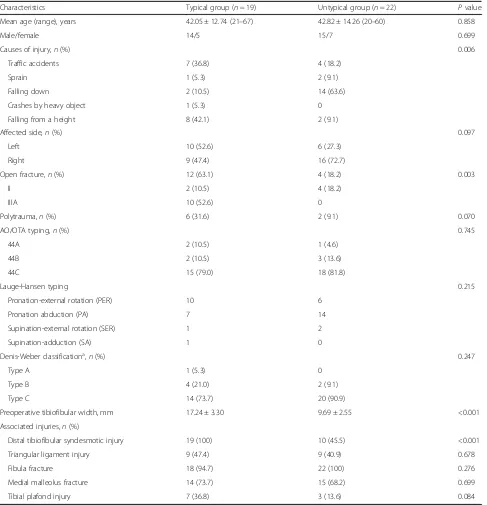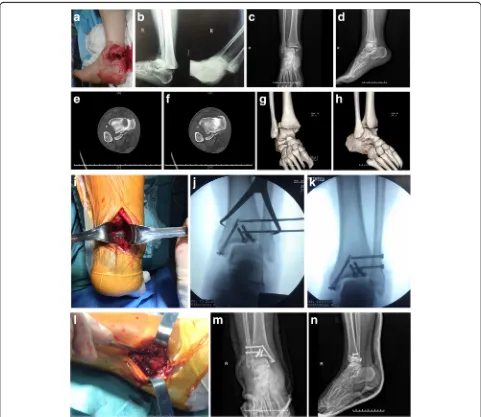Treatment and outcome prognosis of patients with high-energy transsyndesmotic ankle fracture dislocation—the “Logsplitter” injury
10
0
0
Full text
Figure




+2
Related documents
Cite this article as: Willett et al.: Ankle Injury Management (AIM): design of a pragmatic multi-centre equivalence randomised controlled trial comparing Close Contact Casting (CCC)
Improving Global Outcomes; MDRD: Modification of Diet and Renal Disease; NHFS: Nottingham Hip Fracture Score; NH-RISK: Nottingham Hip Fracture – Risk Score for Kidney Injury;
Effects of accelerated versus standard care surgery on the risk of acute kidney injury in patients with a hip fracture: a substudy protocol of the hip fracture Accelerated
Th e patient underwent emergency surgical procedu- res, including closed reduction and internal fi xation of the proximal femur fracture using a Strykerâ Gamma Nailâ 3 420 mm x
